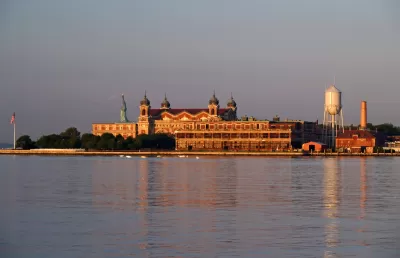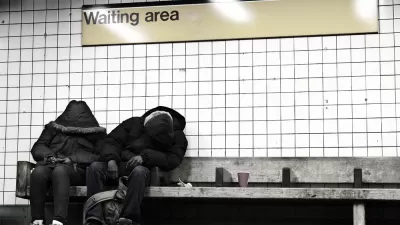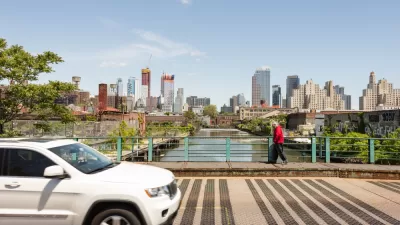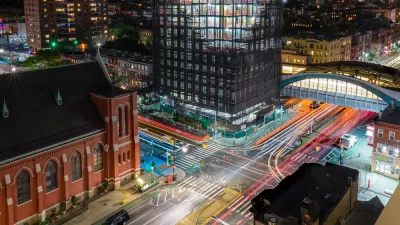The Adams administration in New York City will relax the review process for homeless shelters to create new space for arriving asylum seekers.

New York Mayor Eric Adams signed Executive Order 406 on May 15, temporarily suspending rules in the city’s Uniform Land Use Review Procedure, New York City’s version of the development approval process, to reduce the review process for siting, leasing, constructing, and operating new homeless shelters.
According to the executive order, the mayor’s decision to relax the city’s approval process for homeless shelters comes in response to the arrival of asylum seekers in the city. “[T]he City now faces an unprecedented humanitarian crisis that requires it to take extraordinary measures to meet the immediate needs of the asylum seekers while continuing to serve the tens of thousands of people who are currently using the DHS Shelter System,” according to the executive order.
Elizabeth Kim reports the news of the executive order in an article for Gothamist. The city’s shelter system is “at or near capacity,” according to city officials and aid workers cited in the article.
“The city previously suspended its lengthy land use review process for the building of emergency relief centers, which are designed to serve as temporary housing for migrants,” reports Kim. “But as part of the new order, the city will now include homeless shelters in that exemption.”
“The suspension of rules — known as the Uniform Land Use Procedure or ULURP — means that the city will not be required to hold hearings or submit to any of the typical approvals or recommendations involved in land use approvals,” adds Kim.
Kim also reports that the Adams administration is considering 20 school gyms as possible shelter sites.
FULL STORY: Mayor Adams suspends NYC review process for building shelters as more migrants arrive

Alabama: Trump Terminates Settlements for Black Communities Harmed By Raw Sewage
Trump deemed the landmark civil rights agreement “illegal DEI and environmental justice policy.”

Planetizen Federal Action Tracker
A weekly monitor of how Trump’s orders and actions are impacting planners and planning in America.

Why Should We Subsidize Public Transportation?
Many public transit agencies face financial stress due to rising costs, declining fare revenue, and declining subsidies. Transit advocates must provide a strong business case for increasing public transit funding.

Understanding Road Diets
An explainer from Momentum highlights the advantages of reducing vehicle lanes in favor of more bike, transit, and pedestrian infrastructure.

New California Law Regulates Warehouse Pollution
A new law tightens building and emissions regulations for large distribution warehouses to mitigate air pollution and traffic in surrounding communities.

Phoenix Announces Opening Date for Light Rail Extension
The South Central extension will connect South Phoenix to downtown and other major hubs starting on June 7.
Urban Design for Planners 1: Software Tools
This six-course series explores essential urban design concepts using open source software and equips planners with the tools they need to participate fully in the urban design process.
Planning for Universal Design
Learn the tools for implementing Universal Design in planning regulations.
Caltrans
Smith Gee Studio
Institute for Housing and Urban Development Studies (IHS)
City of Grandview
Harvard GSD Executive Education
Toledo-Lucas County Plan Commissions
Salt Lake City
NYU Wagner Graduate School of Public Service





























